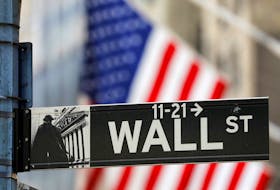‘This time is different.’
These are the four most expensive words in investing. That’s because whatever seemingly unique situation we’re going through is not all that different from what the economy and markets have already experienced. In other words, most "secular" trends are just "cyclical." Things that are way above or below the long-term trend eventually revert to the mean.
But really? Isn’t this time different? We’ve never had anyone like Trump before. Surely Brexit is a once in a lifetime disruption. And how often do we see the world’s biggest trading nations fighting like children?
Our firm is driven by bottom up research (company by company) rather than macro analysis, but we keep a live dashboard of issues that could impact our clients’ returns going forward. Valuation is at the core of it, but we also monitor a range of cyclical and secular trends.
I recently talked about two of the most important ones in client presentations across the country. Surprising to some, I didn’t focus on Trump, Brexit and trade. Policy announcements and tweets on these issues still cause markets to jump, and they certainly have the potential to impact economic and profit growth. But in my view, they’ve moved into the ‘not different’ category. We will muddle through each of them and their negative impact is waning.
Rather, my presentation highlighted two forces that are often overlooked by investors and yet arguably, will have a bigger impact on returns.
Debt Fatigue
We have been living in an over-stimulated economy for many years now. Despite experiencing one of the longest growth cycles in history, governments continue to run recession-like deficits and our ‘data driven’ central banks have kept interest rates at levels normally reserved for an economic crisis. In a decade of record auto sales, rising real estate prices, overbooked restaurants, and three or four new smartphones per person, we continued to binge on debt.
Massive monetary and fiscal stimulation were needed to get us through the debt crisis ten years ago, but we got hooked. Last week it was reported that consumer debt as a percentage of disposable income hit a new high in Canada. And governments in Toronto, Ottawa and Washington continue to run large deficits. The world carries a heavier debt load today (relative to incomes and size of economy) than it did before the 2007-08 debt crisis.
This factor is flashing on my dashboard because it can’t go on indefinitely. At some point, the pace of debt growth must slow or reverse, and with it will come less economic activity and a dramatically different attitude toward consumption and investing.
Expanding middle class
While we live in our debt-laden cocoon in western countries, however, we need to remember that there’s a big, dynamic world out there. Indeed, a vast majority of the 7.5 billion people on the planet live in regions that are growing. And more importantly, the middle class in India, China and other parts of Asia is expanding rapidly.
According to Consensus Economics, 12 per cent of India’s population was middle class in 2017. By 2030, the percentage is expected to be close to 80 per cent. Think about it — there will be an additional 350-500 million people in India alone who might buy an appliance, subscribe to a streaming service or take a vacation. Even if the number is 50 to 60 per cent, the potential is incredible for global sellers of products and services.
Mysterious markets
In recent years, many investors have been surprised that stock markets went higher in the face of a chaotic political landscape. These two macro trends go a long way to explaining why.
Cheap and plentiful credit pulled future consumption forward to present day and importantly, encouraged risk taking in the capital and real estate markets. Meanwhile, countries outside of the western world provided an extra shot of growth.
One of these trends is likely to come to a jolting end. The debt cycle won’t be different this time. It will end with higher defaults and more restrictive credit policies.
The other, a steady shift of economic power from the west to the east, is a more sustainable trend. Indeed, the growing middle class is going to become an even bigger force going forward.
By Tom Bradley
Tom Bradley is President of Steadyhand Investment Funds, a company that offers individual investors low-fee investment funds and clear-cut advice. He can be reached at [email protected]
Copyright Postmedia Network Inc., 2019









